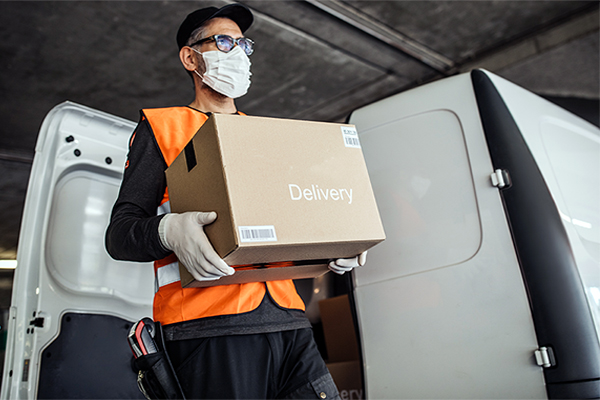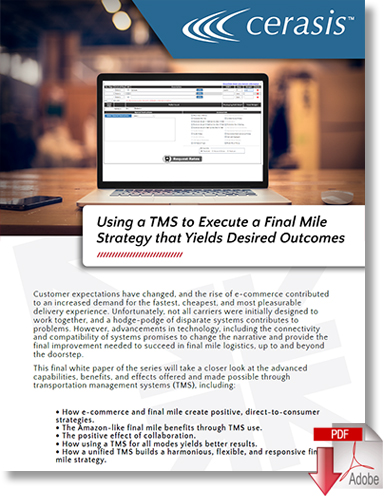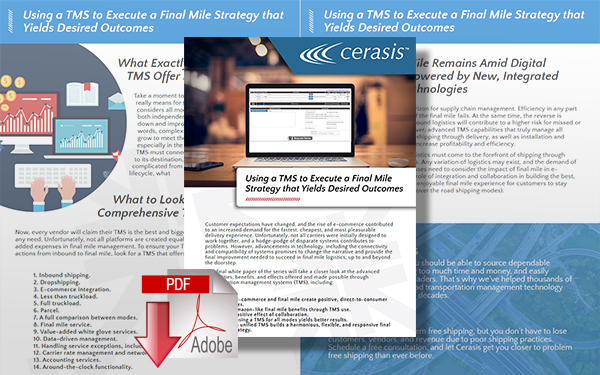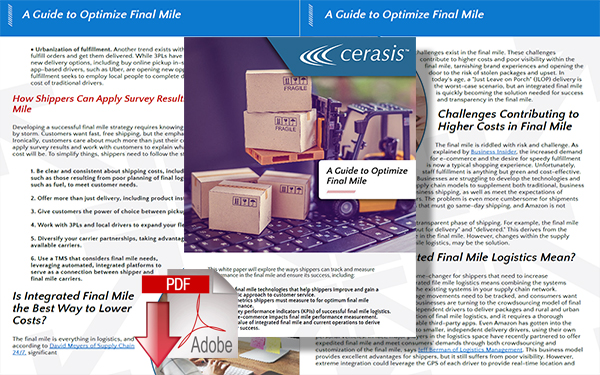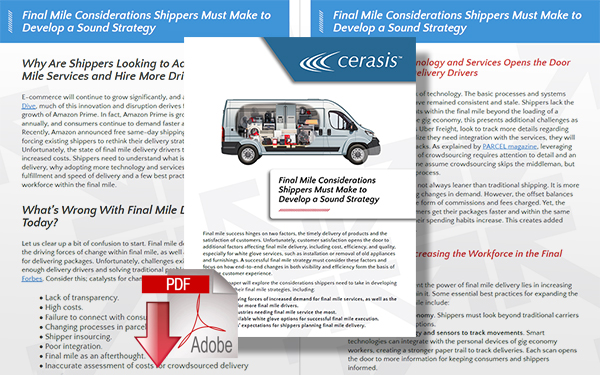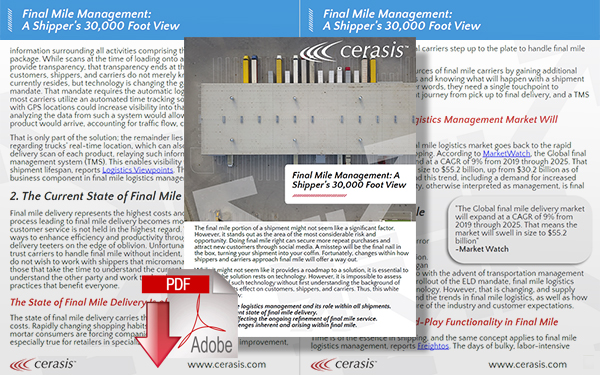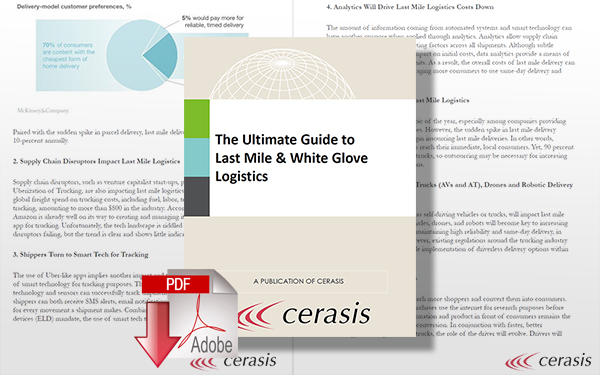Last Mile Health Strategies That Can Help Mitigate Losses During Supply Chain Disruptions
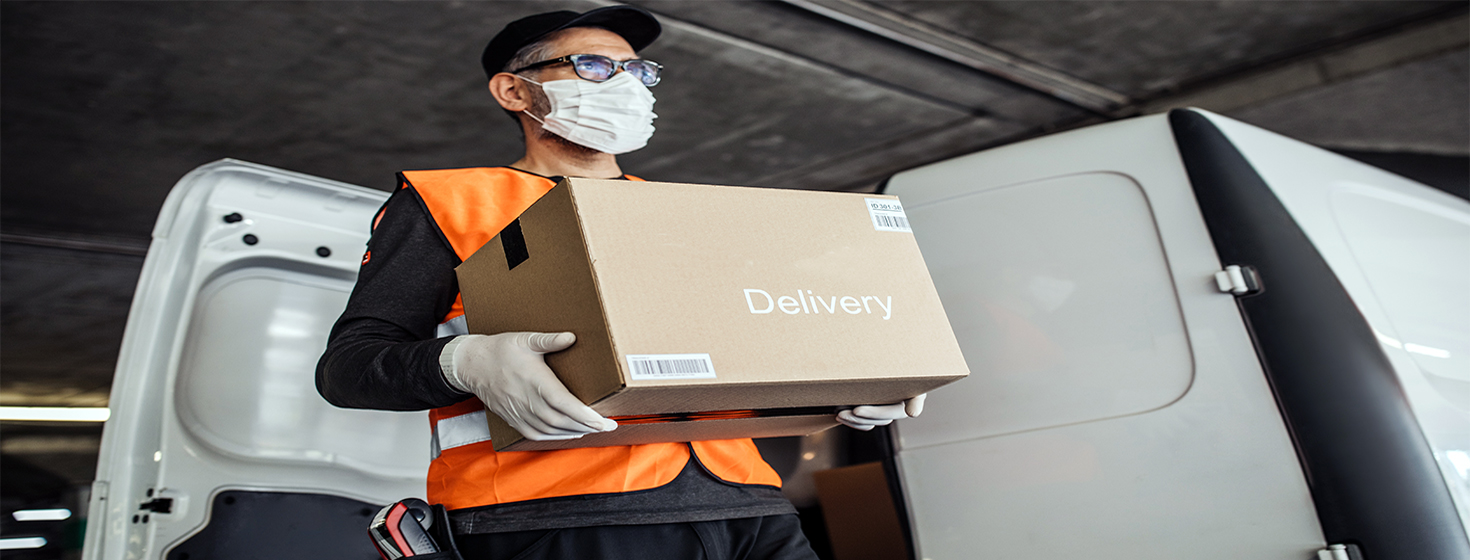
Last-mile health, including e-commerce logistics, suffers irreparable harm when disruptions occur without any mitigation strategies in place, however, technologies have the potential to provide a vaccine for better last-mile health.
Better Last-Mile Health
Last-mile delivery has never been more important than today.
During times of massive disruption, the right supply chain management strategies can boost visibility, lower risk, and increase the speed of service.
Unfortunately, disruptions often occur with little, if any warning, putting company profitability and efficiency at risk.
Last-mile health, including e-commerce logistics, also suffers irreparable harm when disruptions occur without any mitigation strategies in place.
However, technologies have the potential to provide a vaccine for better last-mile health.
But, A.T. Kearney’s lead partner in operations and performance transformation, Sean Monahan, via Retail Dive warns, “any solutions to last-mile delivery problems need to solve issues of speed, security and most importantly, surety.”
So, shippers need to know a few of the last-mile health strategies that can mitigate losses amid disruption.
1. Recognize the Risks That May Impact Your Operation
Prior to the COVID-19 pandemic, supply chain professionals and C-Suite executives grew complacent with the idea that more visibility and efficiency must involve lean inventory and the limited supply chain network.
Unfortunately, the COVID-19 highlighted a major problem - supply chains lost resiliency and flexibility. In turn, companies found themselves in a unique position, unable to secure more products and supplies when customer demands went through the proverbial roof. Obviously, some supply chains did diversify supplier relationships, but most relationships remained in a specific part of the world - Asia.
As a result of disruptions in the APAC region, it was only a matter of time before the problems reached the U.S. supply chain. They simply overlooked the risk. Thus, reviewing all possible risks is an essential disruption prevention strategy. The same applies to the last mile. Shippers need to think about how those risks could impact the final mile, such as limited access to customer homes, offering contactless delivery options, and more. Clearly, C-Suite executives should have taken stock of the risks in limiting the geographic footprint of such relationships.
2. Expand Your Supply Chain Relationships
The next prevention strategy lies in the diversification of supply chain relationships. This includes leveraging the full scale and power of all carriers, not only the Big Three. Instead of relying on a single supplier in one country, C-Suite executives need to establish relationships with other manufacturers. Even raw material availability is at stake today, and the only way to prevent a recurrence is to expand available relationships before the next disruption hits.
3. Automate Repetitive, Manual Processes
Another part of the risk to last-mile health comes from its repetitive, redundant, and frankly riskier process. Since the last mile involves multiple “touches” within the back of a delivery van, it represents the greatest opportunity for loss. Of course, it’s not always possible to eliminate all touches. But, new technologies, including drones and curbside services, are quickly replacing the standards of last-mile delivery.
For instance, UPS is now taking extra care to leave packages further from the doorway. Of course, that does open the door to risk, but speaking of doors, what if drones could move the package from van to door? What if drones could sort the packages while the driver simply drives? It’s an endless array for the experts to review, but major companies, including FedEx, reports Truckinginfo, have launched efforts to offer automated last-mile services within the last year.
4. Deploy a Connected TMS
A connected transportation management system (TMS) that relies on telematics and automated systems also serve to protect against disruption in the first pick through the final mile. A connected system is an integral component of a successful logistics strategy from any standpoint as well. A connected TMS is also essential to modern fulfillment processes that lead to faster last-mile delivery, such as cross-docking and dropshipping, using freight data visibility to power metrics that feed into analytics, which are up next in this lineup of prevention strategies.
5. Use Advanced Analytics to Increase Last Mile Health and Visibility
Advanced analytics that connects the TMS and the scope of the logistics alphabet soup system suites that enable freight delivery can improve last-mile health and visibility. Instead of knowing if customers are satisfied, integrated systems provide immediate feedback to drivers and shippers. Analytics determine the causes of good or bad experiences, helping to improve driver and supply chain performance around the clock. Remember that you cannot improve what you do not measure and analyze.
Prepare for the Next Disruption With Future-Proof Supply Chain Planning and Prevention Strategies Now
The modern supply chain must maintain a degree of flexibility to thrive. Along the path to efficiency and enlightenment, C-Suite executives left flexibility in the trenches. And according to Deloitte, “a decades-long focus on supply chain optimization to minimize costs, reduce inventories, and drive up asset utilization has removed buffers and flexibility to absorb disruptions - and COVID-19 illustrates that many companies are not fully aware of the vulnerability of their supply chain relationships to global shocks…New supply chain technologies are emerging that dramatically improve visibility across the end-to-end supply chain, and support companies’ ability to resist such shocks.” In other words, put these five strategies to work NOW.
Related Article: Renewed Focus on Logistics Last-Mile Delivery Service during COVID-19 Pandemic Disruption
Related White Paper Series
How to Realize the Substantial Benefits of Final Mile Logistics
This white paper, How to Realize the Substantial Benefits of Final Mile Logistics, is a must-read for shippers looking to maximize the logistics of the final mile. Download Now!
Using a Transportation Management System to Execute a Final Mile Strategy
This white paper takes a closer look at the advanced capabilities, benefits, and effects offered and made possible through transportation management systems (TMS). Download Now!
Final Mile Considerations Shippers Must Make to Develop a Sound Strategy
This white paper explores the final mile considerations shippers need to take in developing or rebuilding their final mile strategies. Download Now!
Final Mile Considerations Shippers Must Make to Develop a Sound Strategy
This white paper explores the final mile considerations shippers need to take in developing or rebuilding their final mile strategies. Download Now!
Final Mile Management: A Shipper’s 30,000 Foot View
This is a must-read white paper for those shippers who are looking at incorporating Final Mile Logistics Management into their transportation options. Download Now!
The Ultimate Guide to Last Mile & White Glove Logistics
Shippers must adapt to the changing consumer demands and tailor last mile strategies to mesh well with such demands. In this e-book, “The Ultimate Guide To Last Mile & White Glove Logistics”, details these top lessons that shippers need to know about last-mile logistics in the modern era. Download Now!
More Resources from Cerasis
Article Topics
Cerasis News & Resources
GlobalTranz Appoints Executive Chairman Bob Farrell as Chief Executive Officer Amazon’s Drone Delivery Hits Milestone with Federal Aviation Administration Clearance Digital Supply Chain: The Landscape, Trends, Types, and the Application in Supply Chain Management Walmart’s Bid for TikTok Could Benefit the Retail Giant’s Ecommerce and Advertising Businesses The State of Ecommerce Logistics Heading into 2020 Peak Delivery Season Bringing Omnichannel to the Forefront of Ecommerce FedEx’s Fred Smith Optimistic About Economic Recovery as Ecommerce Business Booms More CerasisLatest in Transportation
Baltimore Bridge Collapse: Impact on Freight Navigating Amazon Logistics’ Growth Shakes Up Shipping Industry in 2023 Nissan Channels Tesla With Its Latest Manufacturing Process Why are Diesel Prices Climbing Back Over $4 a Gallon? Luxury Car Brands in Limbo After Chinese Company Violates Labor Laws The Three Biggest Challenges Facing Shippers and Carriers in 2024 Supply Chain Stability Index: “Tremendous Improvement” in 2023 More Transportation